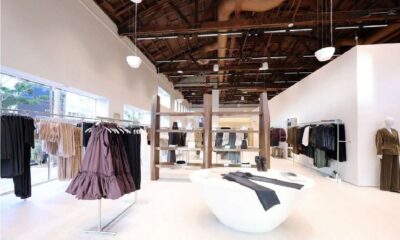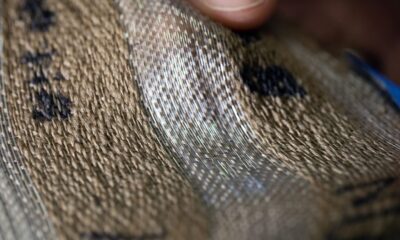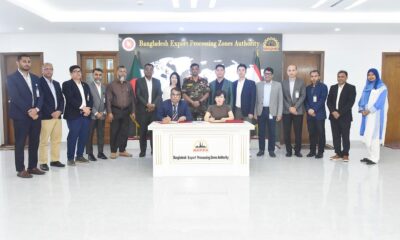Fashion
Indian apparel industry urges urgent govt support
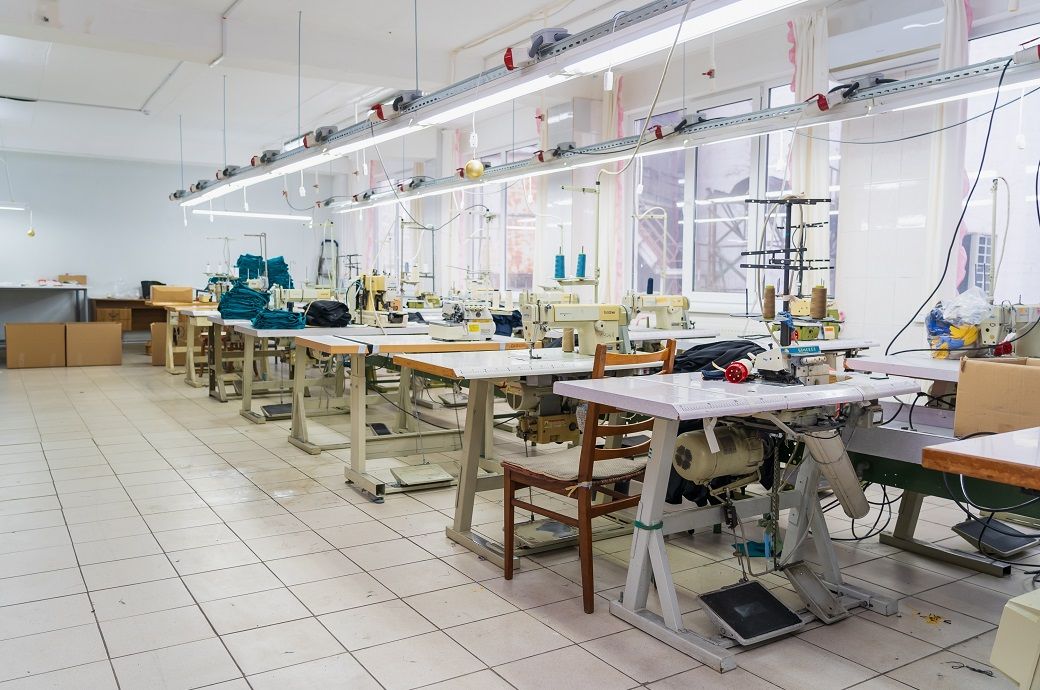
The Apparel Export Promotion Council (AEPC) said the industry had reconciled to a 25 per cent reciprocal tariff but the further burden would make Indian exports uncompetitive. “The additional 25 per cent will close the US market for Indian apparel. Exporters will now face a tariff differential of 30–31 per cent against major competing nations,” AEPC Secretary General Mithileshwar Thakur told Fibre2Fashion. He urged immediate fiscal support until a bilateral trade agreement can be reached.
India’s apparel industry warns of an existential crisis as US tariffs on exports will soar to above 50 per cent from August 27, 2025.
Exporters face a tariff gap of over 30 per cent against competitors, risking three million jobs and 20,000 factories.
Industry leaders urge urgent fiscal support and stronger diplomatic engagement until a bilateral trade pact is secured.
Jasveen Kaur, Senior Director of Merchandising at New Times Group, described the tariff shock as “seismic,” saying nearly 25 per cent of Tiruppur’s US-bound knitwear orders have already been paused or cancelled. “This is not about two per cent of GDP—it is about millions of jobs and the survival of entire communities,” she said, adding that exporters are slashing prices to keep shipments moving as US buyers renegotiate or withdraw.
Industry estimates suggest around three million jobs and 20,000 factories are at risk. While some exporters are exploring joint ventures in Bangladesh, Sri Lanka, and Southeast Asia, Kaur noted that diversifying markets and securing new buyers could take more than a year. “We need decisive government action and stronger diplomatic engagement with the US,” she appealed.
Sanjay K Jain, Chairman of the ICC National Textiles Committee and MD of TT Ltd, echoed these concerns. “The industry is at a standstill, and 50 per cent of orders (for export to the US) will likely be cancelled. The rest can only be retained if exporters absorb losses. The impact of such super-high tariffs will be terrible and felt across the entire value chain,” he warned.
While the government’s recent move to waive the 11 per cent cotton import duty was welcomed, industry players said it offers little relief against the tariff shock. Exporters are focusing on cost optimisation, targeting a 15–20 per cent reset, but say sustained government support is vital to prevent large-scale disruption in India’s apparel sector.
Fibre2Fashion News Desk (KUL)
Fashion
UK budget mildly deflationary; debt to climb past 106%: Fitch

The rating agency said the government’s latest fiscal package is broadly in line with projections made when it affirmed the UK at ‘AA-’/Stable in August but said that the path to consolidation is becoming more challenging.
Fitch Ratings has deemed the budget marginally deflationary, sees debt rising above 106 per cent of GDP by 2027.
The agency said the UK budget broadly aligns with its August deficit projections but signals of rising implementation risks due to back-loaded tax measures and tight spending plans.
New taxes total £26 billion (~$34.37 billion) by FY29, while social spending rises further.
Fitch said the budget’s new tax measures represent £26 billion (~$34.37 billion), or 0.7 per cent of GDP, by fiscal 2029 (FY29), with threshold freezes contributing £8 billion (~$10.57 billion). New Office for Budget Responsibility (OBR) data show general government net borrowing projections 0.2 percentage points (pp) higher on average in 2026–2028 than in March, before falling 0.2 points in 2029, Fitch Ratings said in a release.
Fiscal data since summer remain broadly in line with Fitch’s forecast for the general government deficit to narrow by 0.6 pp in 2025 to 5.3 per cent of GDP and then to 4.4 per cent in 2027, around 0.7 points slower than the government’s new targets.
The agency highlighted material uncertainty around implementation, particularly given the challenging expenditure consolidation outlined in June’s Spending Review, which the budget largely preserves. Real-terms public-sector current spending growth has been tightened further in FY29 to zero, averaging 1.2 per cent in FY26–FY28 compared with 3.4 per cent in FY24–FY25.
Fitch noted that many tax measures are highly back-loaded, coming into effect closer to mid-2029, the latest possible timing of the next general election. A large portion of the tax plan also consists of numerous smaller measures, making the overall impact less transparent than the broader income tax rise the government signalled before the budget. Options to raise further revenue are politically constrained by 2024 election pledges not to increase personal income tax, VAT or National Insurance.
Still, Fitch said Chancellor Rachel Reeves is demonstrating firmer commitment to the fiscal rule than recent predecessors. Last year’s decision to shorten the rolling forecast horizon from five to three years from 2026 has reduced the scope to delay real fiscal adjustment. Aligning fiscal plans more closely with three-year spending reviews also makes it harder to rely on unrealistic spending cuts to fill fiscal gaps.
Budget headroom has increased from £12 billion to £22 billion, around 0.6 per cent of GDP, but Fitch said this remains limited and constrains efforts to improve policy predictability.
Revenue projections have been reshaped by a £16 billion downgrade in expected tax receipts due to lower OBR productivity assumptions, reducing average GDP growth in 2026–2029 by 0.3 pp to 1.5 per cent. Upward revisions to inflation and wage growth more than offset this decline. The OBR’s updated medium-term GDP growth outlook is now closer to Fitch’s trend estimate of 1.4 per cent, of which total factor productivity contributes only 0.3 points.
Although sustained high nominal gilt yields represent a significant fiscal risk, the UK’s long average debt maturity of 13.7 years helps contain projected debt-interest requirements, which Fitch expects to rise modestly to 7.4 per cent of revenue in 2027 from 7 per cent in 2024.
Fitch projects modest GDP outperformance in the near term compared with its August forecast of 1.2 per cent for 2025, although a weakening labour market poses a small downside risk to its 1.2 per cent projection for 2026. The agency judges the budget as marginally deflationary and expects inflation to fall to 2.4 per cent by end-2026.
Fibre2Fashion News Desk (HU)
Fashion
New Balance launches three new stores in Bengaluru, India

Published
December 1, 2025
Global athletic brand New Balance has expanded its brick-and-mortar footprint in the Bengaluru metro area and opened its doors at three new locations: Indiranagar, HSR, and Forum South Bengaluru.
“We are excited to deepen our presence in Bengaluru- with our stores at Brigade Road, Indiranagar, Forum Mall, and HSR, anchoring us in a city that embodies innovation, culture, and an unwavering passion for fitness,” said New Balance India’s country manager Radeshwer Davar in a press release. “This weekend’s in-store experience and community run allowed us to bring New Balance’s philosophy to life while reinforcing our commitment to building inclusive fitness communities and we want to thank the people of Bengaluru who turned up in great spirit.”
Highlighting its long-term commitment to the Indian market, the new outlets are designed to offer an immersive retail environment and mix craftsmanship with technology. New Balance held an exclusive in-store event at its Indiranagar store, featuring an interactive brand showcase of both footwear and apparel. The New Balance Run Club also put on a community run which saw participation from over 200 individuals.
“Over the past year, we’ve more than doubled our retail footprint in India, and these three new stores are a strong testament to that momentum,” said Davar. “For us, it’s not just about expanding retail locations- it’s about creating experiential centres that bring innovation, performance, and style together under one roof.”
Headquartered in Boston, US, New Balance has been independent since 1906 and employs 10,000 associates worldwide. The business reported a global sales total of 7.8 billion dollars in 2024 and counts five athletic footwear factories in New England, US and one in Flimby, UK.
Copyright © 2025 FashionNetwork.com All rights reserved.
Fashion
U.S. Black Friday online sales hit record $11.8 billion, Adobe reports
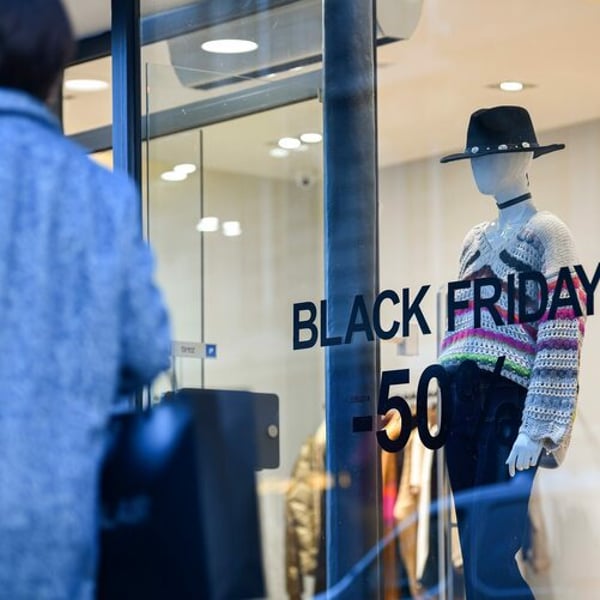
By
Reuters
Published
December 1, 2025
American shoppers spent a record $11.8 billion online on Black Friday, up 9.1% from last year, final data from Adobe Analytics showed.
Adobe Analytics, which tracks over 1 trillion U.S. retail site visits, expects shoppers to spend $5.5 billion on Saturday and $5.9 billion on Sunday, up 3.8% and 5.4% from a year earlier respectively.
Separately, software firm Salesforce reported that American consumers had spent $18 billion on Black Friday purchases, up 3% from a year ago, with luxury apparel and accessories among the most popular categories.
Although U.S. consumers spent more this Black Friday compared to last year, price increases hampered online demand, according to Salesforce, with shoppers purchasing fewer items at checkout compared to last year.
At physical stores, the bargain-chasing was relatively subdued on post-Thanksgiving morning, with some shoppers saying they feared overspending amid persistent inflation, trade policy-driven uncertainty, and a soft labor market.
Cyber Monday, traditionally a big day for online deals, is expected to be the season’s biggest online shopping day again, Adobe projects, driving $14.2 billion in spending, up 6.3% from last year.
© Thomson Reuters 2025 All rights reserved.
-

 Sports1 week ago
Sports1 week agoWATCH: Ronaldo scores spectacular bicycle kick
-

 Entertainment1 week ago
Entertainment1 week agoWelcome to Derry’ episode 5 delivers shocking twist
-

 Politics1 week ago
Politics1 week agoWashington and Kyiv Stress Any Peace Deal Must Fully Respect Ukraine’s Sovereignty
-

 Business1 week ago
Business1 week agoKey economic data and trends that will shape Rachel Reeves’ Budget
-

 Politics1 week ago
Politics1 week ago53,000 Sikhs vote in Ottawa Khalistan Referendum amid Carney-Modi trade talks scrutiny
-

 Tech6 days ago
Tech6 days agoWake Up—the Best Black Friday Mattress Sales Are Here
-

 Fashion1 week ago
Fashion1 week agoCanada’s Lululemon unveils team Canada kit for Milano Cortina 2026
-

 Tech1 day ago
Tech1 day agoGet Your Steps In From Your Home Office With This Walking Pad—On Sale This Week






